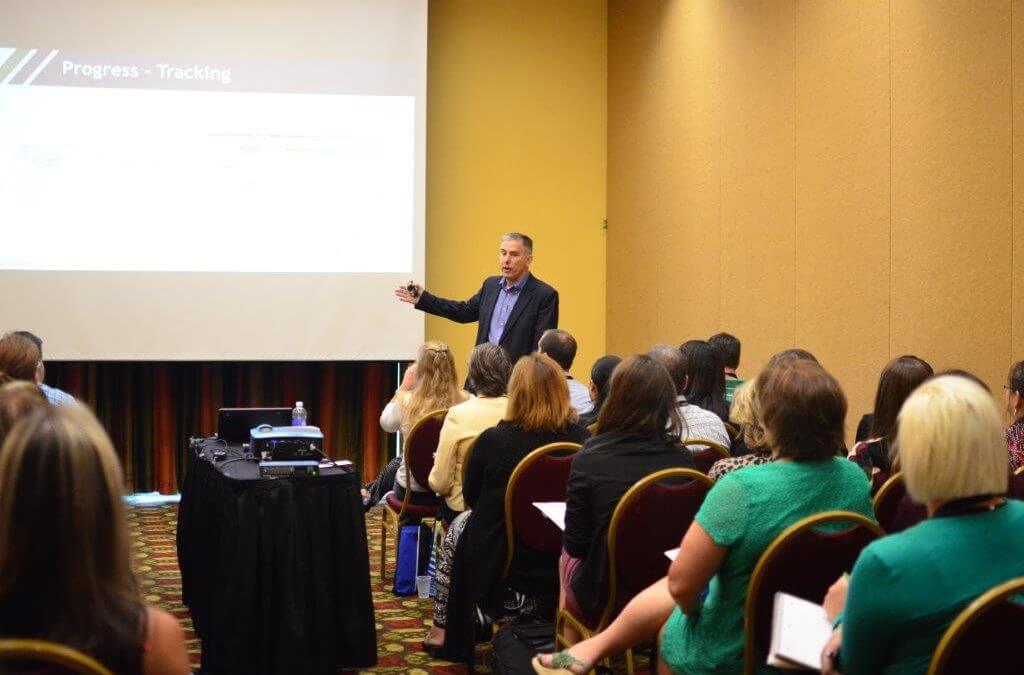Top 3 Mistakes Conference Speakers Make
I’ve just come back from several conferences and watched many conference speakers in action. One of the benefits of speaking at a conference is usually a full pass to attend the entire conference. I like to get there early and watch other speakers (as well as learn what they are discussing).
But the real measure of success in observing conference speakers is to watch the audience. Are they engaged? Laughing? Taking notes? Responding to questions? Looking up related material? Staying after to engage the speaker? Sadly, the answer is frequently, “no”. And there’s really no excuse for that. A conference is full of people who share interests and WANT to attend your talk. It’s the perfect place to connect and make a fun, interactive, and highly valuable presentation.
The competition to speak at conferences is heavy. I know: I get several “We are unfortunately unable to use you for our upcoming event” messages a year. When the opportunity does avail itself, being on top of your game is critical.
Here are three easy fixes I notice that can set conference speakers apart from the TCP (Typical Conference Presenter).
- Stop talking about yourself
Whether it was the world-renown keynoter who kept reminding us that she was the “#1 expert in the world on __” and had Mr. Big NameDrop as a personal friend or the little-known breakout session presenter who opens with, “Let me open with a little about myself…”, the less you talk about yourself is usually better. I’m certainly not against first-person stories or the setup as to why you are qualified to speak, but since you have an audience that CHOSE to attend your particular presentation, it really doesn’t matter who you are. They’re there. You’re the speaker. Start strong, meet the objectives of the session, and MAKE IT ABOUT THEM (remember that pesky Rule #1!)
- Never believe that your slides are your talk.
The dreaded, “Send us your presentation so we can include them in the app/proceedings/web site” is an email I love to get. “My slides are useless to anyone not in my session since they’re only there to help the audience with my message. I am the presentation, so I can’t send me in the format you request!” Most of the time conference organizers are fine with that (I expect they hate Death By PowerPoint as much as I do). I do provide handouts, and I do make them available to anyone who asks. But I never make my in-person visuals available, and they really should not be of much use without me. Otherwise, I have made myself useless and unnecessary.
- End on time
Oh, I know the previous person ran over. I’m aware that the room proctor started late and the introduction took too long. It’s on my 
Conference speakers know that speaking at a conference is one of the best ways to be seen and recognized as an expert who has value to a particular market. It’s wonderful branding and a fabulous marketing opportunity. But if you don’t do well on the stage, it’ll be harder and harder to find that stage.
Related Videos: I’ve collected a list of phrases and words that are distinctly NOT good for presenters to say, and the reasons why. They are in short, two-minute video segments on the MillsWyck Communications Youtube channel in our What Not To Say video series. Enjoy!
Communication matters, what are you saying?
This article was published in the October 2017 edition of our monthly speaking tips email, Communication Matters. Have speaking tips like these delivered straight to your inbox every month. Sign up today and receive our FREE download, “Twelve Tips that will Save You from Making a Bad Presentation.” You can unsubscribe at any time.



